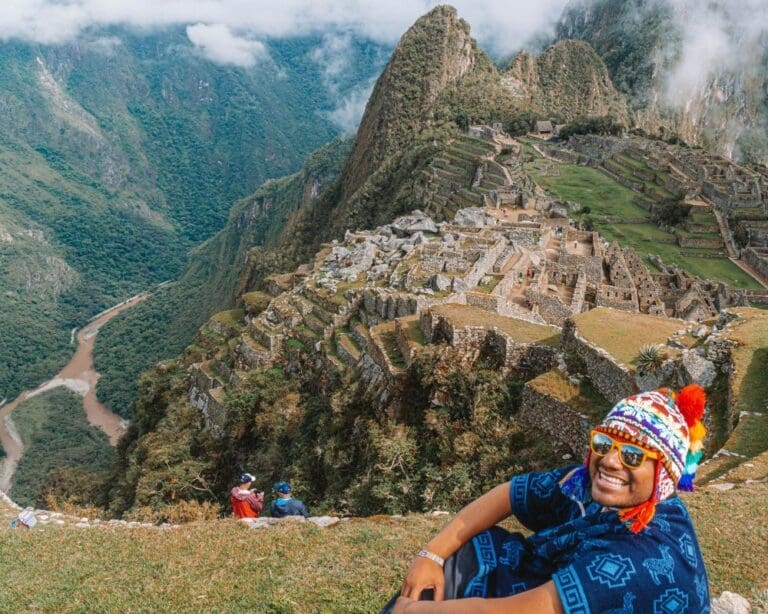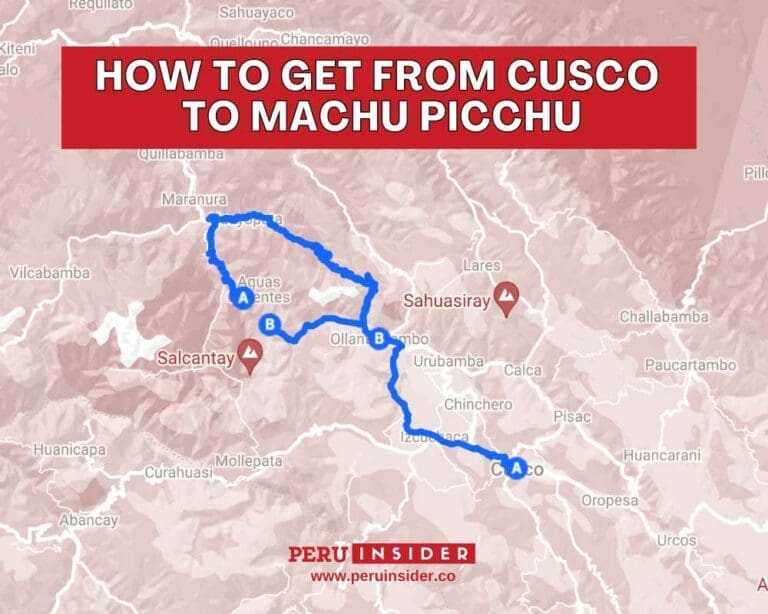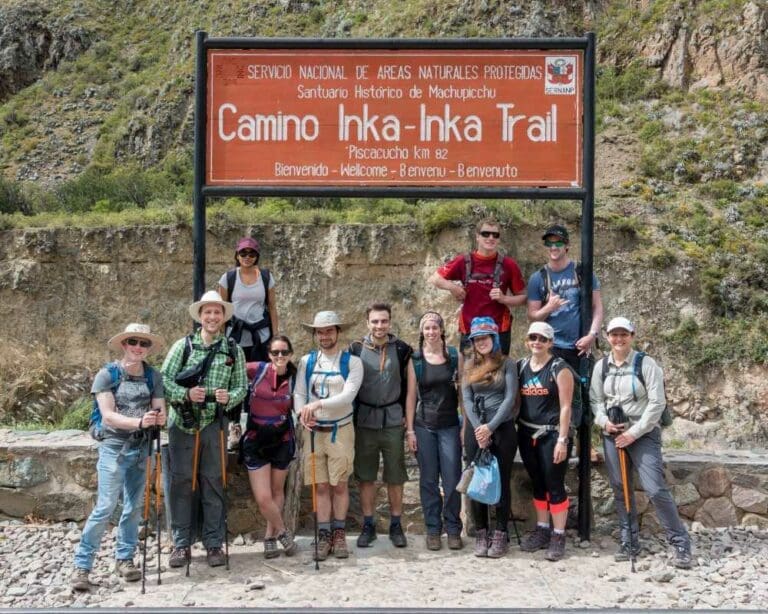Everything you need to know about walking the train track route to Machu Picchu
Discover an untrodden path with the Machu Picchu hike along the train tracks: the cheapest and fastest way to go to Machu Picchu for all ages and physical levels!
Machu Picchu, often referred to as the “Lost City of the Incas”, remains one of the world’s most iconic archaeological sites. And there are many ways to get to Machu Picchu.
However, if you are pressed with time, the best recommendation and the shortest hike to Machu Picchu is through the train track height.
It’s easier, it’s for all ages, and for all fitness levels! Even kids and 70-year-olds do this hike! Apart from being easy, this is also the cheapest way to get to Machu Picchu.

The train track hike, often chosen as an alternative to the traditional Inca Trail, runs from Ollantaytambo or the Kilometer 104 marker to Aguas Calientes, the town at the base of Machu Picchu.
Unlike the mountainous terrains of other routes, this trail traces the path of the railway, weaving through lush jungle and alongside the roaring Urubamba River.
I have done this hike twice and in this guide, I will walk you through what to expect when doing this trek to Machu Picchu.
You might also like:
- How to get to Machu Picchu in 17 different detailed ways
- Plan your trip to Machu Picchu this budget guide
- Is it safe to travel to Machu Picchu alone?

🚆 Train tracks: the shortest hike to Machu Picchu
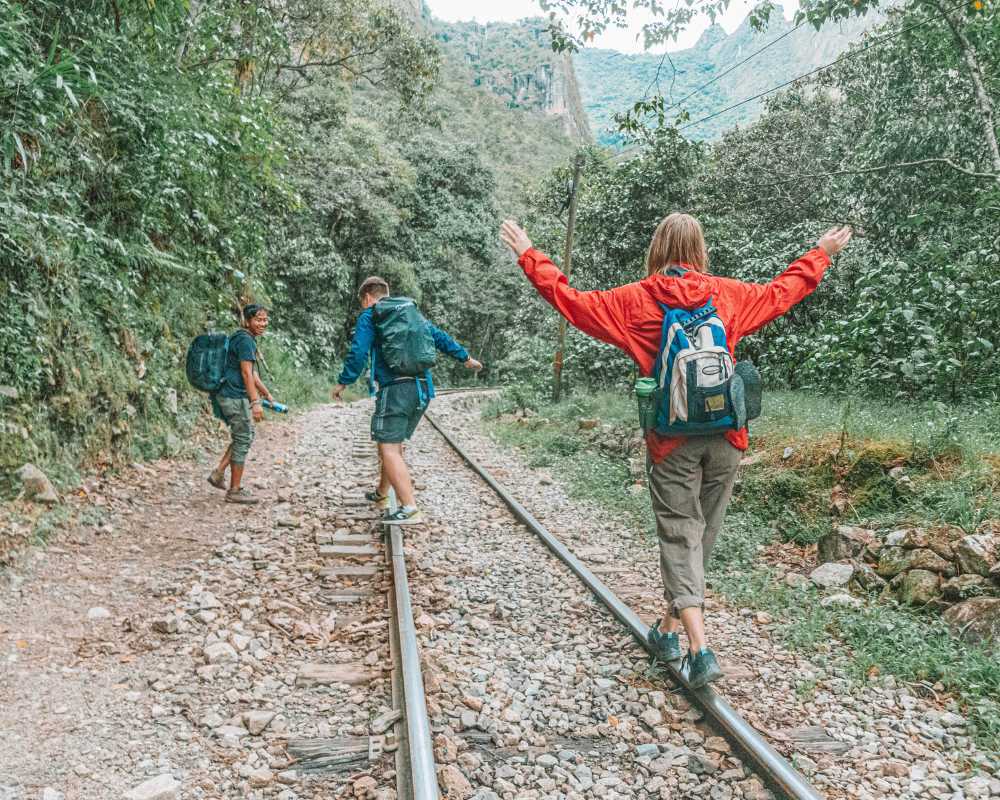
For those seeking an off-the-beaten-path experience, the train track hike offers a blend of adventure and accessibility.
Unlike the challenging terrains of high-altitude treks, this route is more accommodating to varying fitness levels.
The Machu Picchu hike through the train tracks lasts for 6 hours to Aguascalientes. This all depends on the speed of your group (or if traveling alone, your speed).
By evening, you should arrive Aguascalientes, check in at a hotel and spend the night there. The next day, you will do the Machu Picchu hike from Aguascalientes at any time you want to start.
When walking the train tracks, you will see an ever-changing landscape, from cloud forests to rocky canyons, providing a visual feast.
There are also many restaurants, food shops, vendors, and toilets along the train tracks if you want to stop. Again, the length of this walk all depends on you!
Without the need for camping gear or permits required for some other routes, this hike allows for spontaneity and personal pace.
🏋🏻♂️ Preparing for the Machu Picchu hike

Embarking on a hike to Machu Picchu, especially along the train tracks to Aguas Calientes, is an exhilarating endeavor.
However, adequate preparation is paramount. Proper planning not only ensures your safety but also maximizes the overall experience.
This section delves into the fundamental aspects every traveler should consider before setting foot on the trail.
Required permits and regulations

While hiking the train tracks doesn’t necessitate the same permits as the Inca Trail, there are still guidelines to adhere to.
Before anything else, secure your entrance ticket to Machu Picchu. During peak times, tickets can sell out weeks in advance.
While this is an active train track, pedestrians are tolerated. Always be alert and give way to any approaching trains.
Leave no trace. Pack out all your trash, avoid making loud noises, and refrain from feeding or harassing local wildlife.
Machu Picchu hike physical fitness

Even though this hike is less strenuous than other routes, you still need to prepare. Spend a few days in Cusco or another high-altitude location before the hike to acclimate.
Regular walks or light jogs in the weeks leading up to your trip can enhance stamina. As this is the shortest hike to Machu Picchu, the terrain is flat so there aren’t a lot of uphills.
The 6-hour trek is more of a walk than a hike. Do it at your own pace but make sure to wear proper hiking footwear.
📅 Best months to do the Machu Picchu hike

The best months to do the Machu Picchu hike are during the dry season of May to October.
This is the peak tourist season, with clearer skies and fewer rain showers. However, it’s also the busiest time at Machu Picchu.
The wet season from November to April is rainy and misty. While this period sees fewer tourists, the pathways can be slippery, and there’s a higher risk of landslides.
👉🏽 See also: A month-by-month guide on the best time to visit Machu Picchu
🥾 What to wear for the Machu Picchu hike
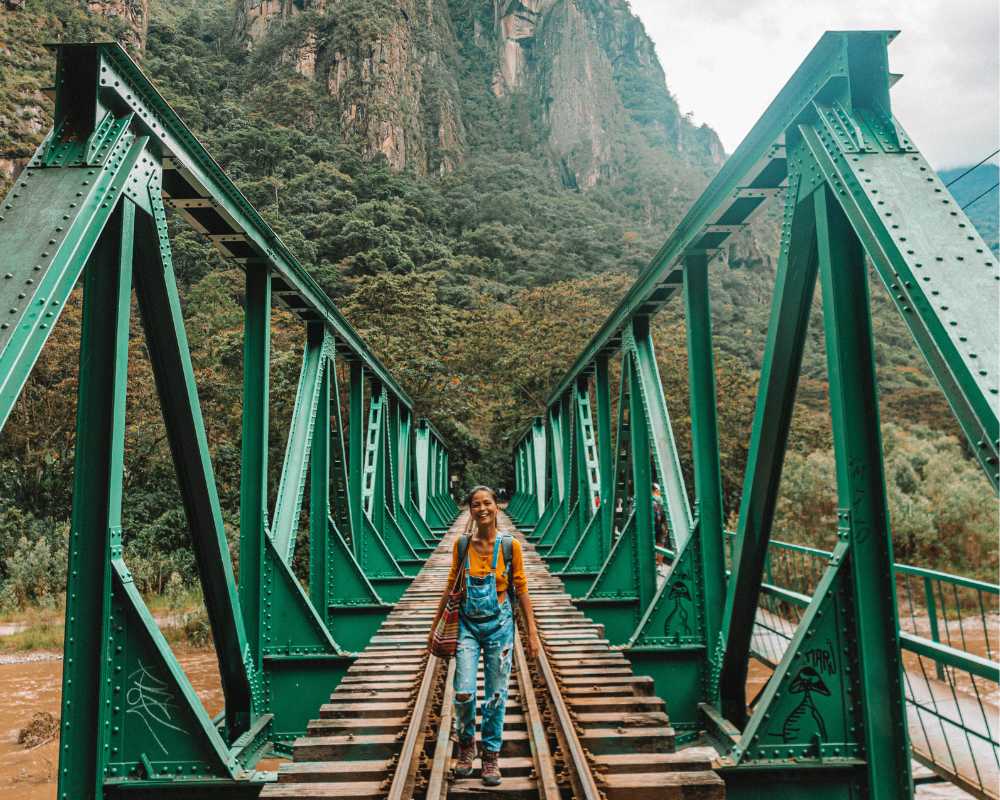
First, check the weather in Machu Picchu for the month that you are visiting. You can refer to my monthly travel guide above so you can prepare.
As for the list of what to wear for hiking Machu Picchu, make sure you have the following:
- Opt for sturdy, comfortable hiking shoes with good grip.
- Waterproof jackets, sun hats, and layered clothing are essential given the region’s variable weather.
- Carry ample water, and consider water purification tablets or devices.
- Energy bars, nuts, and dried fruits are lightweight and provide essential nutrients.
- A whistle, a flashlight, a basic first-aid kit, and a map or GPS device are invaluable.
🚌 How to get to the train tracks from Cusco

As the former capital of the Inca Empire and a major hub for travelers to the Sacred Valley, Cusco serves as the gateway to many adventures in the region.
Once in Cusco, acclimatize for a day or two, explore its historic sites, and discover the city. Cusco is one of my most favorite cities in the world!
However, to start the Machu Picchu hike through the train tracks, you need to get to KM 104. You can take colectivos that run from Cusco to Ollantaytambo.
They’re a popular and cost-effective means of transportation but might be less comfortable than private options.
PeruRail and Inca Rail operate trains from Cusco to Ollantaytambo and onwards to Kilometer 104.
The easiest way is to book transportation which will cost around $80 USD. When booking through our site, you may use the code INSIDER10 to get a 10% discount.
The starting point of the train tracks walk is called Central Hidroelectrica Machu Picchu which is about 5.5 hours van ride from Cusco.
🚶🏼Walking the train tracks to Machu Picchu
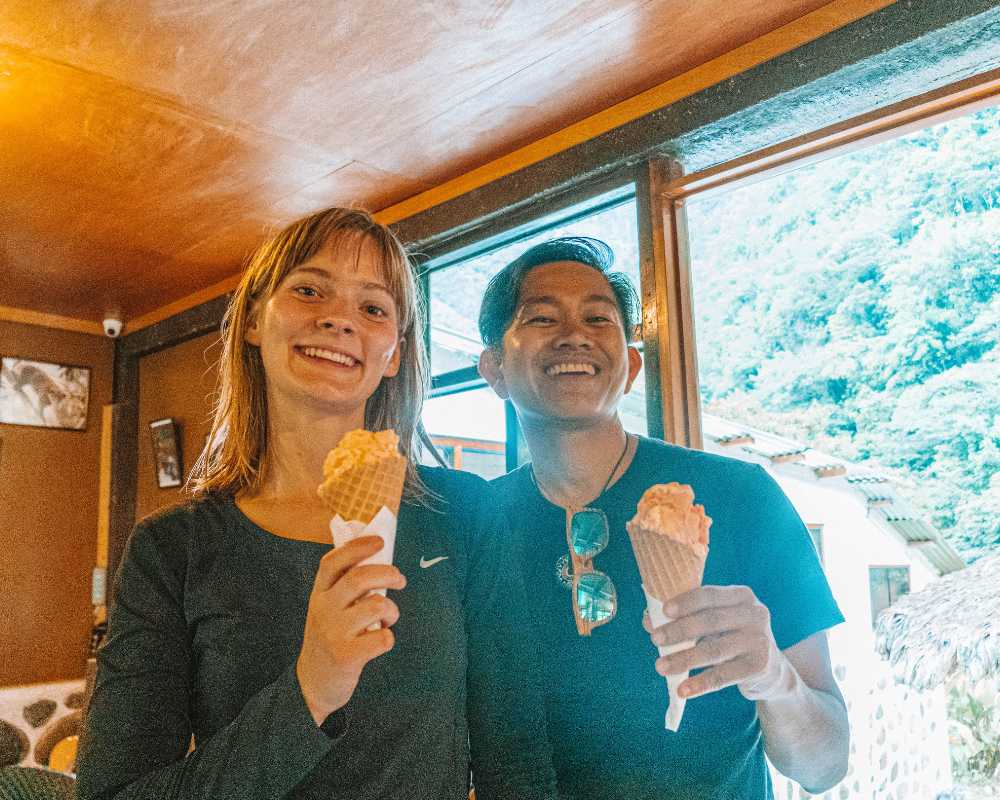
Beginning either from Ollantaytambo or the Kilometer 104 marker, follow the tracks as they weave alongside the glistening Urubamba River.
As you progress, the terrain is mostly flat with mild undulations, the route is punctuated with occasional bridges, tunnels, and open expanses.
Depending on pace and starting point, the hike can take anywhere from 6-8 hours. You can stop whenever you want!
Always be cautious and alert for oncoming trains. Step aside well in advance and avoid standing close to the tracks.
Some tunnels along the route are narrow, and it’s essential to ensure no train is approaching before you enter.
While the Urubamba River’s banks can offer scenic rest spots, the currents can be strong. Avoid getting too close or attempting to swim.
Afternoon rain showers are common, even outside the rainy season. Waterproof gear and slip-resistant shoes are a must.
🧳 Arrival at Aguascalientes travel guide
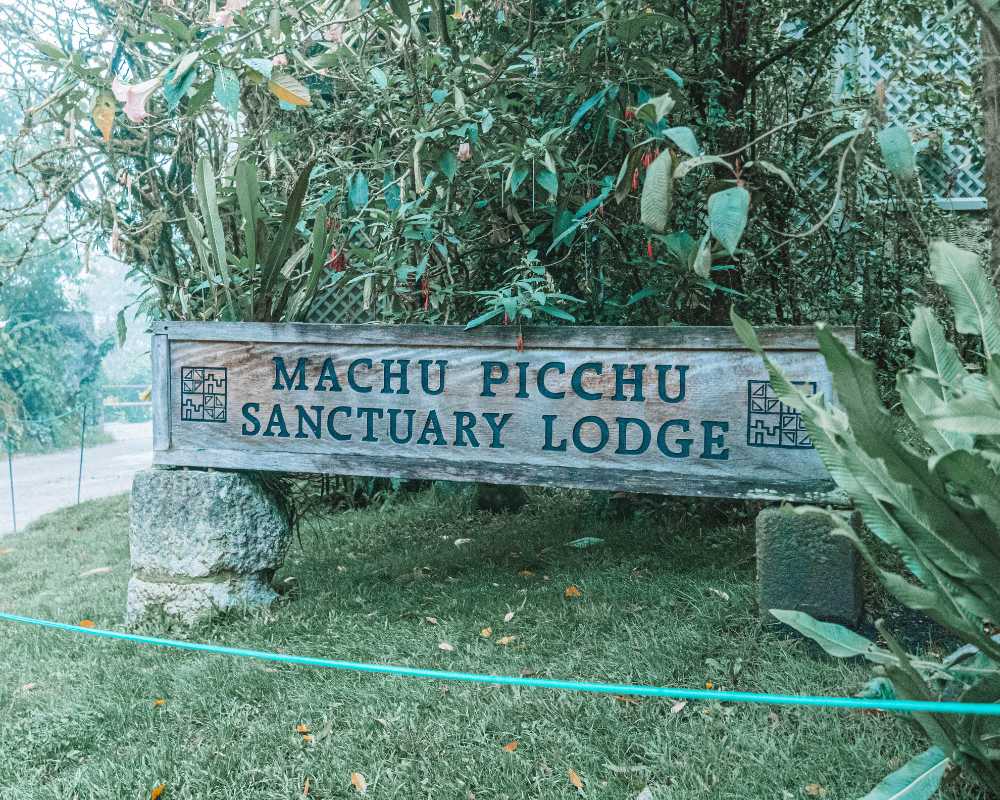
Nestled in the embrace of towering mountains and the roaring Urubamba River, Aguas Calientes, often referred to as Machu Picchu Pueblo, is the final stop before reaching the ancient citadel.
You should arrive here by evening but the first thing you need to do after checking in your hotel is to buy your ticket back to the starting point of the train tracks.
That is, if you don’t want to walk back for another 6 hours. It’s really better to walk to Aguascalientes and take the train back. It’s cheaper and you will enjoy both worlds!
The train station in Aguascalientes closes at 9:00 PM so make sure to get your tickets for the departure before having dinner.
Here’s a quick travel guide for Aguascalientes:
Aguascalientes hotels and accommodations
If you are only staying for one night, choose budget hostels. This is perfect for backpackers and those on a tight budget, numerous hostels offer basic amenities, often with communal areas to connect with fellow travelers.
Mid-range hotels offer a balance of comfort and affordability, these establishments often provide private rooms, hot showers, and sometimes breakfast. (from $75USD).
For those seeking a touch of luxury, there are upscale hotels complete with spa facilities, gourmet dining, and stunning room views. (from $100 USD).
Book your Aguascalientes hotel in advance, especially during peak season.
Dining in Aguascalientes
After a 6-hour hike, you’d like to go dinner right away! Aguascalients has SO many food options. You can also opt for street food. Sample local flavors like roasted corn, tamales, or empanadas from street vendors.
Traditional restaurants, or “picanterias”, serve Andean classics such as “lomo saltado” (stir-fried beef) or “aji de gallina” (chicken in spicy sauce).
Given the town’s tourism-centric nature, a range of international cuisines, from Italian to Asian, is available.
Exploring Aguascalientes town
As you will arrive in the evening and will need to get up early to hike to Machu Picchu, you can explore the town of Aguascalientes upon your descent the next day.
Justifying the town’s name, which translates to “Hot Waters”, go to the local thermal baths after your Machu Picchu hike!
Before boarding the train, visit the Mercado de Artesanías. This bustling market offers a plethora of handcrafted souvenirs, from textiles to pottery.
If you have extra time, you should also visit the Museo de Sitio Manuel Chávez Ballón. This small museum sheds light on the history, architecture, and significance of Machu Picchu.
🎟️ Machu Picchu entrance tickets

Ensure you have your Machu Picchu entrance ticket. Remember, daily visitor numbers are limited, and tickets can’t be purchased at the entrance of the archaeological site.
The entrance fee to Machu Picchu is $40 USD. This is already included if you bought the transportation to the Hidroelectrica, the starting point of the train tracks.
If you are not hiking up to Machu Picchu, you need to buy your bus ticket in Aguascalientes which costs $24 USD for a 2-way trip.
The best and quickest way to hike Machu Picchu is to take the bus up and then walk down. The walk down is easy and you can take your time!
Some people opt to walk up and then take the bus down as the road is really steep. It may hurt your knees!
⛰️ Machu Picchu hike from Aguascalientes
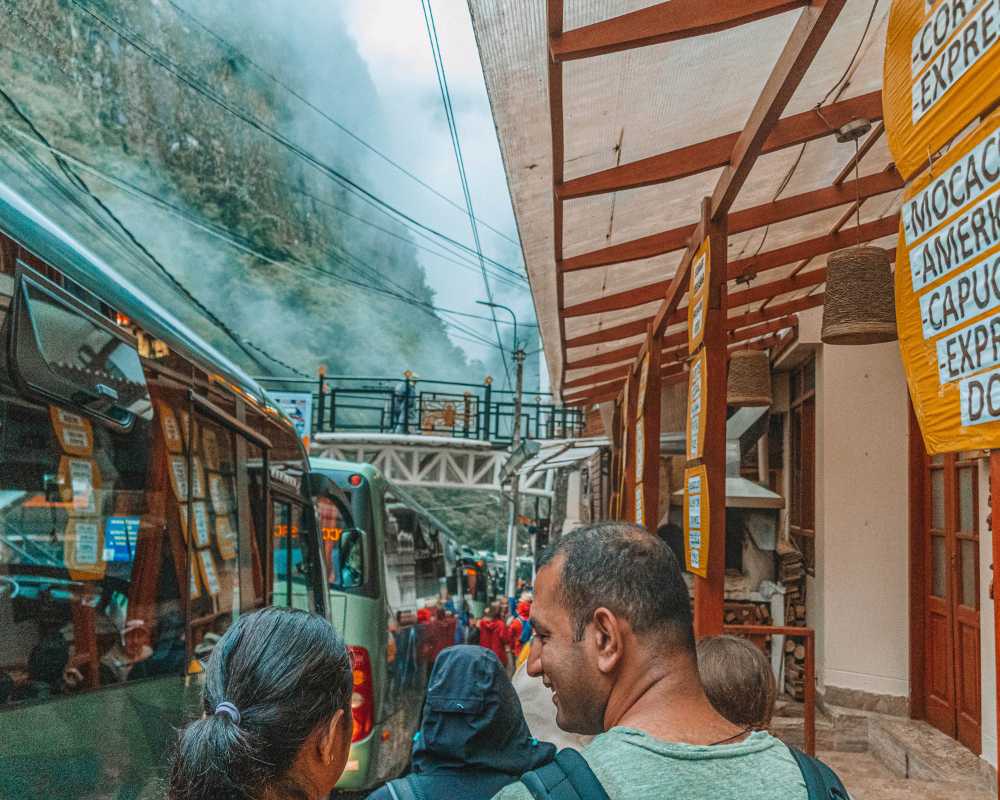
If you are hiking up, start really early, around 4:30 AM. The trekking route begins near Aguas Calientes, and it’s a series of steep and rugged steps leading to the entrance of Machu Picchu.
Depending on your pace, the hike typically takes about 1.5 to 2 hours. The climb can be challenging, especially due to the altitude. Regular breaks and staying hydrated are key.
The early morning ascent provides chances to see various birds and possibly other wildlife, enhancing the trekking experience.
If you are taking the bus to Machu Picchu, buses depart from a central location in Aguas Calientes, operating from around 5:30 AM.
During peak seasons, buses run frequently, minimizing wait times. However, queues can be long, especially early in the morning.
The bus ride takes about 30 minutes, winding through scenic routes to the entrance of Machu Picchu.
🗺️ Things to do in Machu Picchu
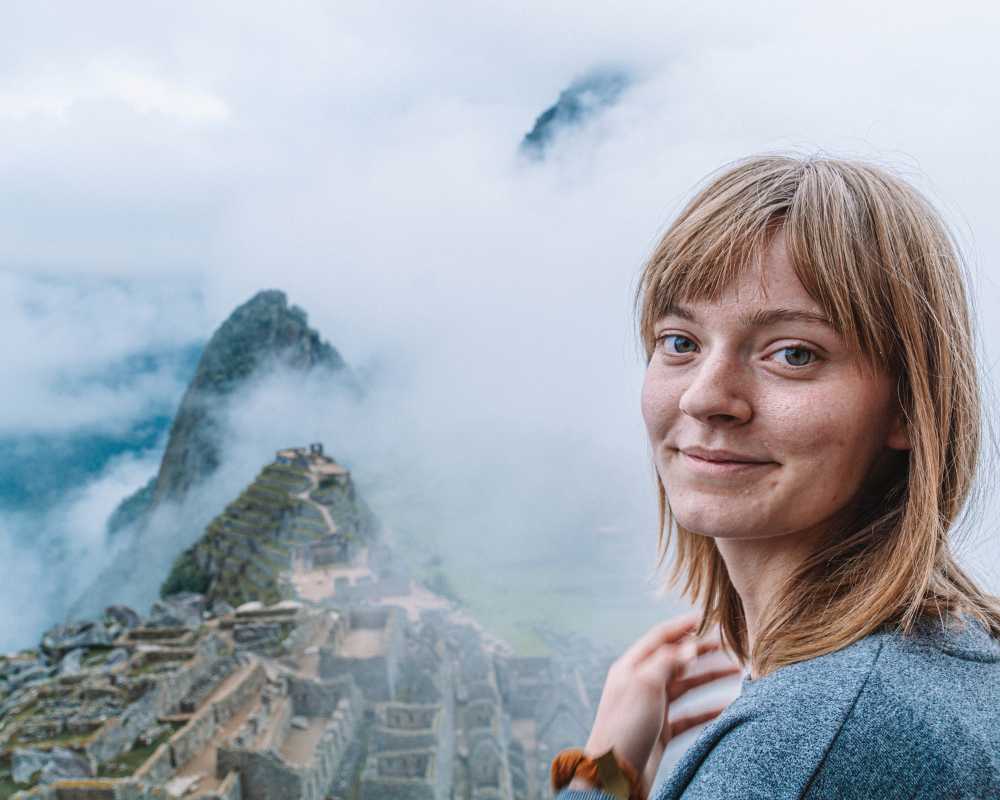
Once at the top, you can freely explore on your own or hire a local tour guide at the entrance gate. I did not hire a guide as I already know Machu Picchu well.
Please note that there is only a one-way route inside Machu Picchu so you can’t go back to the sites once you enter.
Take it slow and check out this route and things to do in Machu Picchu:
1. Explore the ruins in Machu Picchu
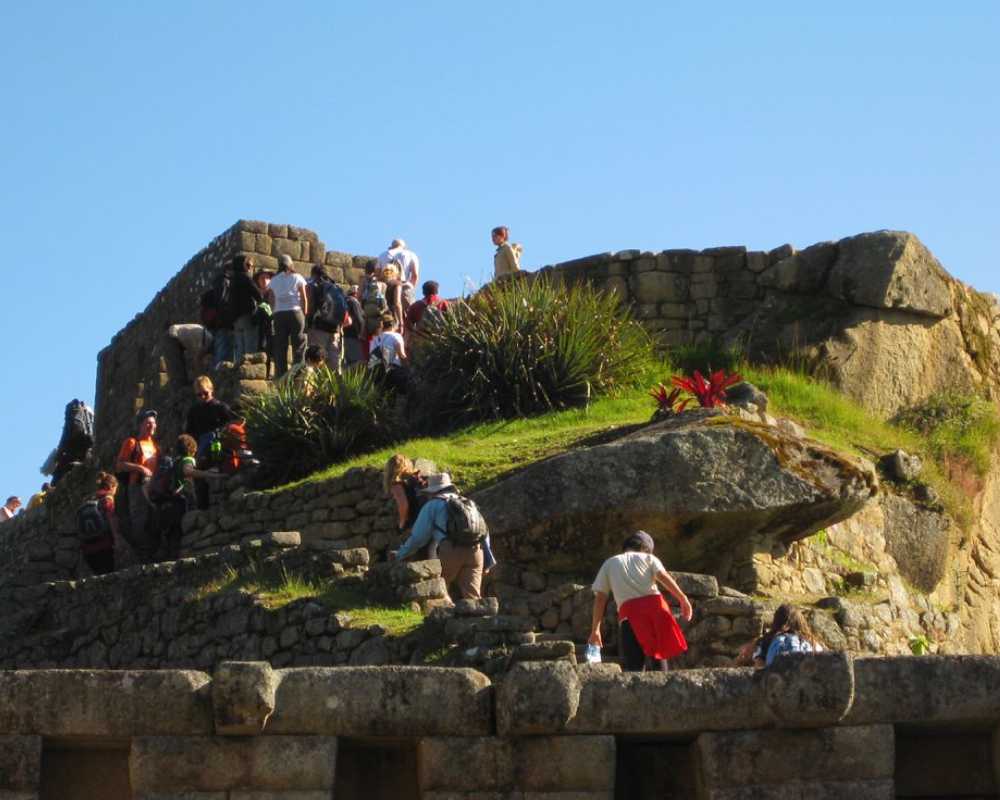
Stepping into the core of Machu Picchu is akin to traveling back in time, to an era where stones whispered tales and civilizations touched the skies.
The main ruins of this ancient city beckon with a blend of mystery and majesty. At the heart of it lies the Intihuatana Stone, a sacred relic where legend has it, the sun’s spirit would tether itself, making it a focal point of celestial observations.
Not far from it, the Temple of the Sun unfurls with its semi-circular grace, its walls bearing the silent witness to ceremonies that once evoked the golden deity’s blessings.
As you navigate this labyrinth of history, the Room of the Three Windows emerges, offering panoramic views and insights into the Inca’s deep-rooted cosmology.
As the path unfolds, the imposing Principal Temple stands tall, a testament to the architectural genius and spiritual depth of its creators.
2. Climb Huayna Picchu or Machu Picchu Mountain

Scaling the peaks of Huayna Picchu or Machu Picchu Mountain is an exhilarating test of endurance, but the reward is unparalleled.
Picture this: standing atop ancient peaks, the world unfurls beneath you in a tapestry of lush green, stone remnants, and winding rivers.
Huayna Picchu, the iconic “young peak,” is challenging yet enthralling, offering breathtaking bird’s-eye views of the citadel.
Meanwhile, Machu Picchu Mountain’s less-trodden path promises serenity and vistas that stretch as far as the eye can see. Embrace the call of the wild and ascend to new heights!
3. Visit the Sun Gate (Intipunku)
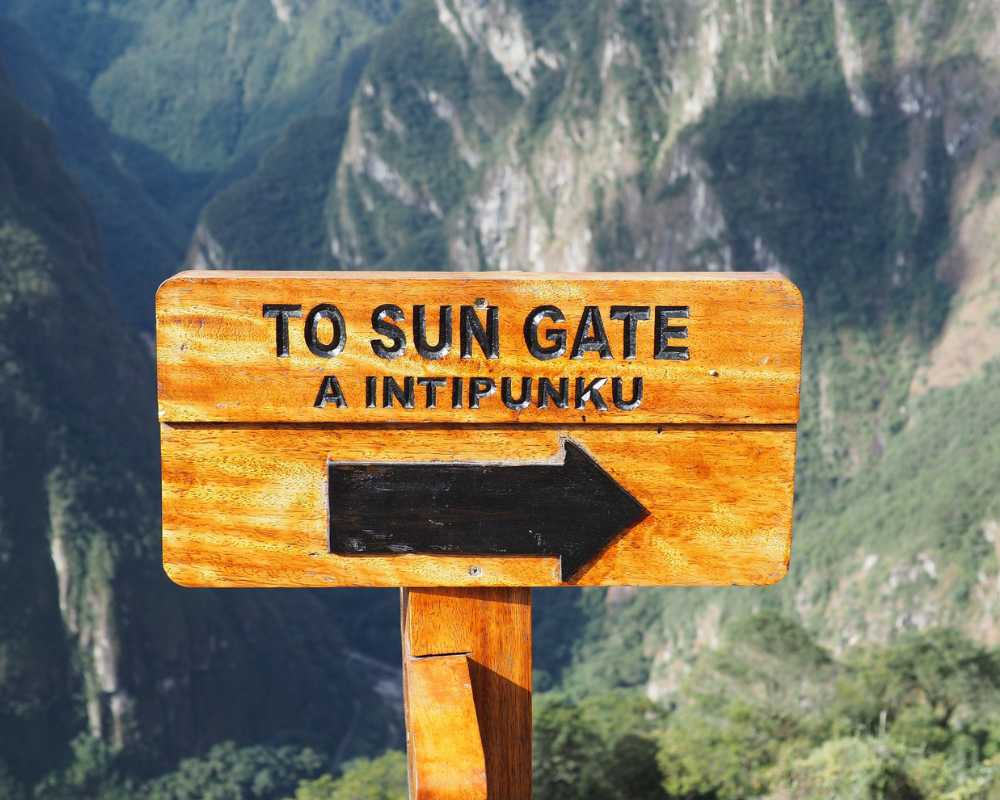
The Sun Gate, or Intipunku, is like stepping into a portal where history and nature embrace. As the ancient entrance to Machu Picchu for pilgrims on the Inca Trail, it’s a symbol of enlightenment and new beginnings.
Arriving here at dawn, travelers are treated to a celestial spectacle as the sun graces the city below. This strategic viewpoint offers a panoramic frame of the whole site, making the trek undeniably worth it.
4. Explore the Royal Tomb
Beneath the terraces lies a clandestine alcove dubbed the ‘Royal Tomb.’ Though no royal remains have been discovered, its enigmatic aura is palpable.
Ornate stone carvings and a ceremonial niche spark intrigue, urging visitors to theorize its purpose. Was it a burial chamber, a shrine, or something else? Delve deep and let your imagination chart its story.
5. Visit the Sacred Rock
In a realm where spirituality echoes in every stone, the Sacred Rock stands solemn and evocative.
Its carved contours mirror the majestic mountains behind, suggesting a profound connection between the Inca and their landscape.
Worship, astronomical study, or artistic expression—its purpose remains shrouded in mystery, beckoning travelers to ponder and reflect.
6. Wander the Agricultural Terraces

The symphony of precision and practicality, Machu Picchu’s agricultural terraces, are an ode to Incan ingenuity.
These cascading steps, which once nourished a civilization, offer mesmerizing patterns that dazzle from both close-up and afar.
Feel the ancient rhythms underfoot as you explore these verdant stairways to history.
7. Bird Watching in Machu Picchu
The skies and thickets of Machu Picchu are teeming with avian wonders. From the flamboyant Andean cock-of-the-rock to nimble hummingbirds, the site is a birder’s paradise.
With binoculars in hand and the murmur of ancient ruins behind, indulge in a serene session of birdwatching, where nature’s symphony plays just for you.
8. The Machu Picchu Museum
A stone’s throw away from the site, the Machu Picchu Museum awaits with treasures untold. Beyond the towering ruins lies a trove of artifacts, stories, and insights into a civilization’s heartbeat. Walk through time, piece together the fragments of history, and deepen your appreciation of this monumental wonder.
9. Photography Spots in Machu Picchu
Every nook and cranny of Machu Picchu is a photograph waiting to be captured. From panoramic vistas atop towering peaks to the intimate details of ancient masonry, there’s a frame for every fervor.
Let the interplay of light, shadow, and ancient architecture guide your lens, and capture moments that transcend time.
Whether you’re an avid shutterbug or an occasional snapper, this city of stones promises a gallery of memories.
10. Guardhouse and Funerary Rock Hut
Climb up to this lookout point. The Guardhouse offers one of the most iconic panoramic views of the entire complex, making it an excellent spot for photography.
11. Take photos with the llamas
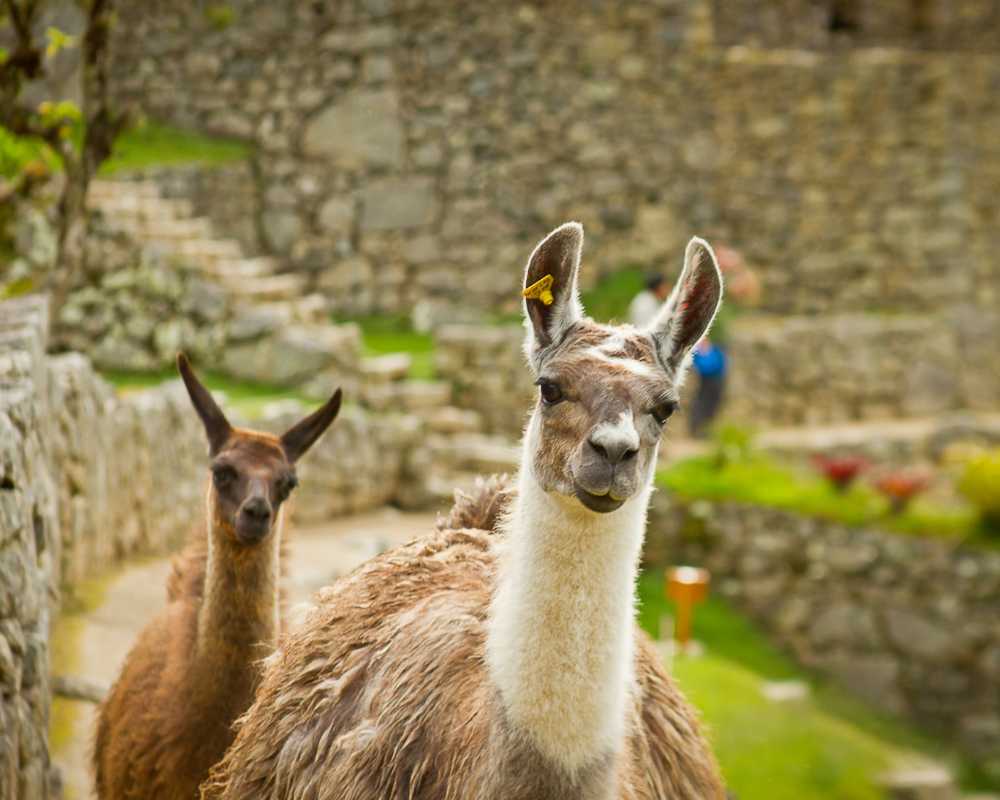
Llamas, with their quirky personalities and iconic stature, have become synonymous with the Andean regions and, of course, Machu Picchu.
These gentle creatures, often adorned with colorful tassels, can create delightful subjects in your photographs, adding a touch of authentic charm to your travel memories.
Llamas are generally docile, but like all animals, they have their boundaries. Always approach them slowly, without sudden or aggressive movements.
🦙 Tip: Instead of shooting from a standing position, crouch down to the llama’s eye level. This perspective can yield more intimate and engaging photos.
🚉 Returning to the train tracks from Aguascalientes

The trek down can be easier on the lungs but harder on the knees. Make sure to wear good hiking shoes and take your time, especially on steeper sections.
If you decide to walk back along the train tracks to Ollantaytambo or Kilometer 104, always be alert. Stay off the tracks and give way to any approaching trains.
Remember that walking back can take several hours, so ensure you have enough daylight or a reliable light source if you’ll be walking during dusk or evening.
I would really encourage you to go around Aguascalientes town after your descent from Machu Picchu. Have some lunch and take the 2:00 PM train ride.
Once you are back to the starting point in the Hidra, the van you paid for will be there to take you back to your accommodation in Cusco (or wherever your next destination is).
🧭 Machu Picchu hike quick itinerary
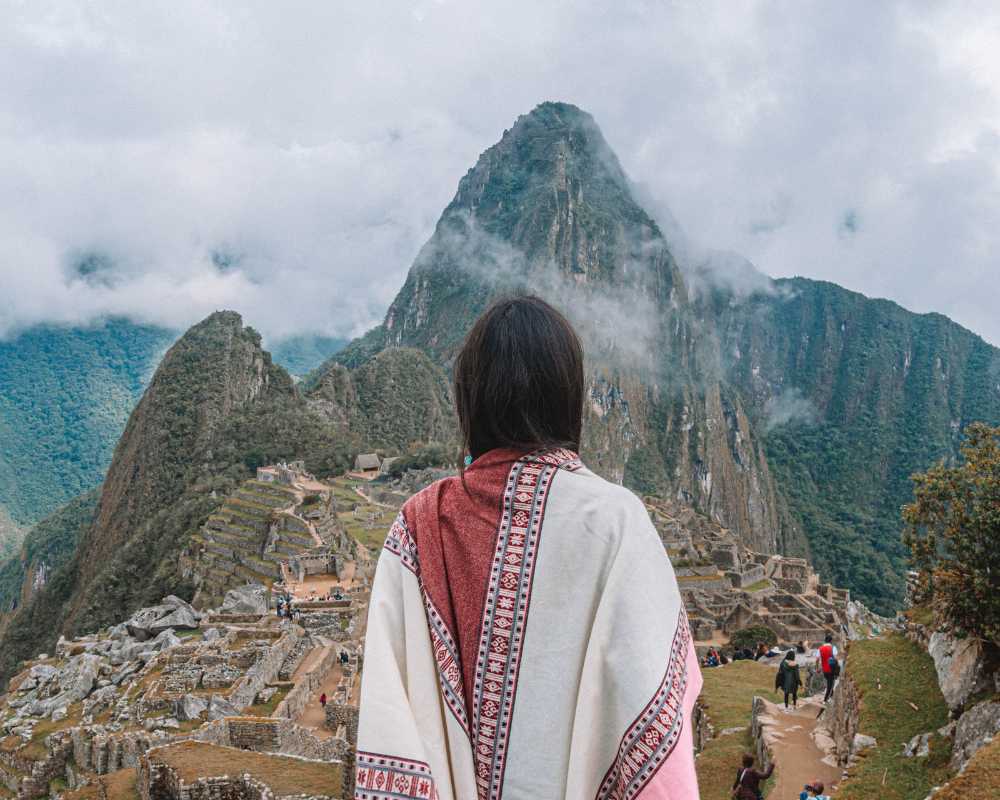
In summary, here’s what your Machu Picchu hike through the train tracks should look like:
Machu Picchu hike day 1:
- 7:00 AM: Leave Cusco to get to the Central Hidroelectrica Machu Picchu, the starting point for the walk to Aguascalientes. (5 hours)
- 12:00 PM: Arrive at the Hidroelectrica and have a quick lunch (included in your transportation)
- 1:00 PM: Start the walk through the train tracks (6 hours)
- 6:00 PM: Arrive Aguascalientes and check-in your hotel
- 6:30 PM: Have dinner in Aguascalientes
- Also remember to buy your entrance tickets to Machu Picchu, your bus tickets to Machu Picchu, and your train ticket back to the Hidroelectrica.
Machu Picchu hike day 2:
- If walking, start at 4:30 AM. If taking the bus, fall in line at the bus station around 5:30 AM. The bus takes 30 minutes while the hike up takes 1.5 hours.
- Spend at least 5 hours inside Machu Picchu
- Walk down or take the bus
- Swim in the hot springs of Aguascalientes
- Explore Aguascalientes town
- Have lunch at a restaurant in Aguascalietes
- Take the train back to the Hidroelectrica
- Meet with your transportation operator and head back to Cusco (or wherever you are going next).


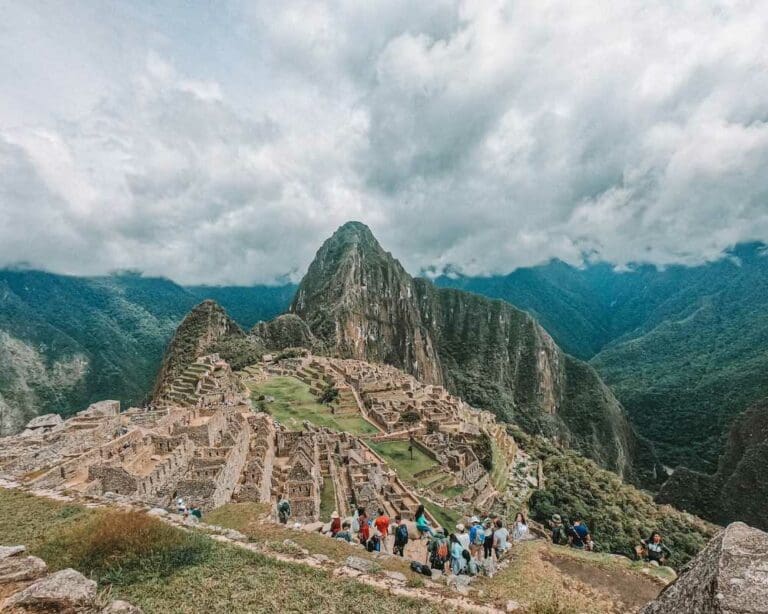
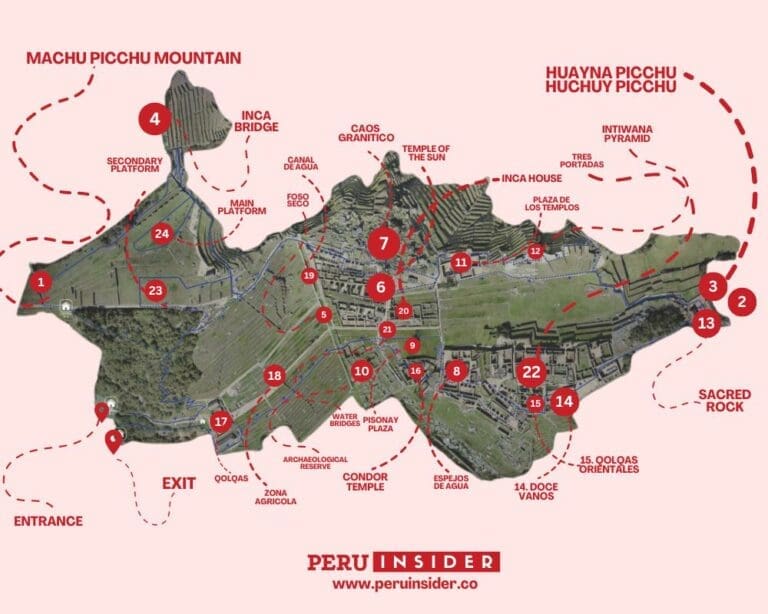
![15 amazing Machu Picchu hotels in Aguas Calientes, Peru [with prices and review]](https://b3076322.smushcdn.com/3076322/wp-content/uploads/Machu-Picchu-Hotels-in-Aguas-Calientes-Peru-768x614.jpg?lossy=2&strip=1&webp=1)
